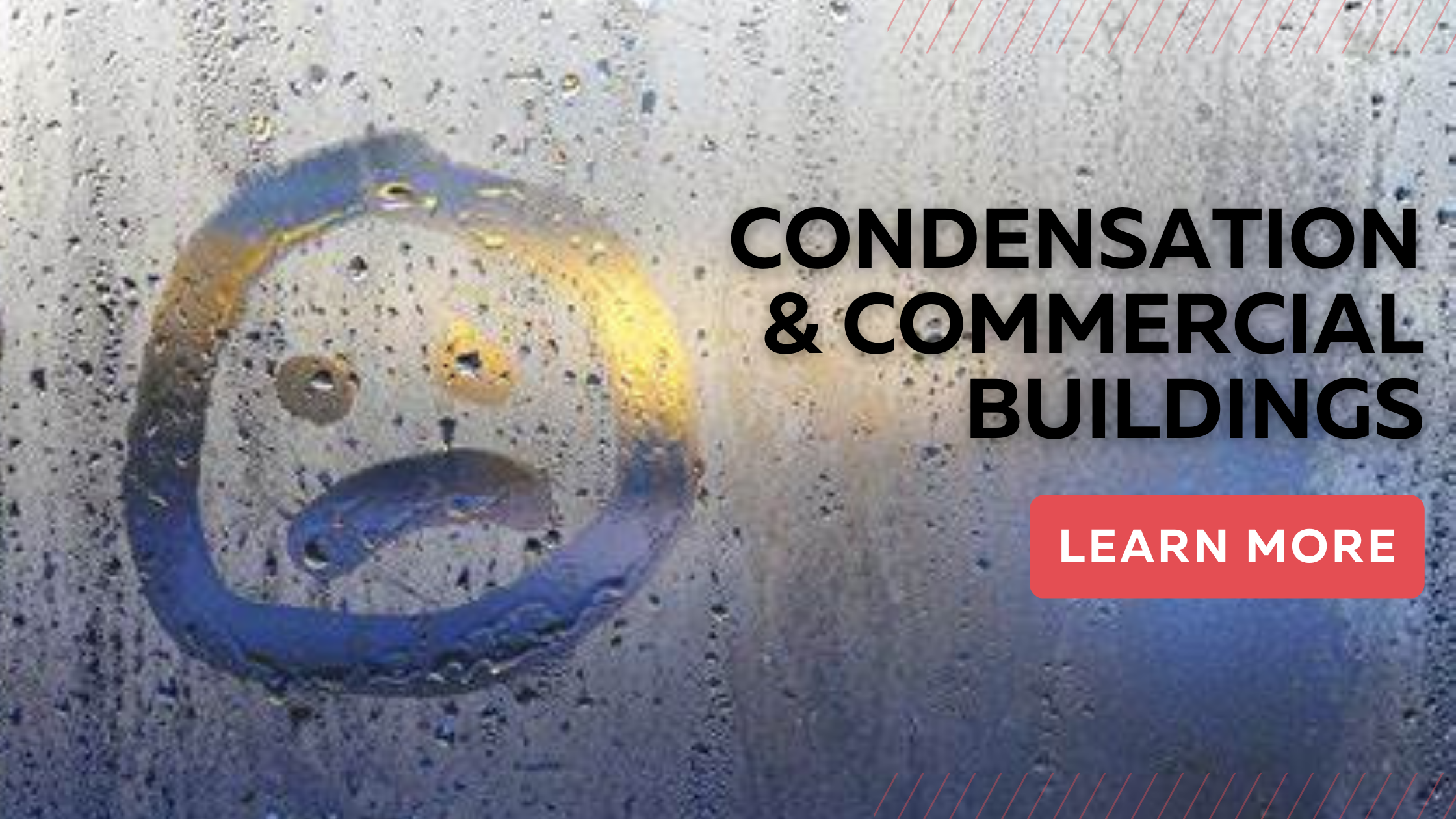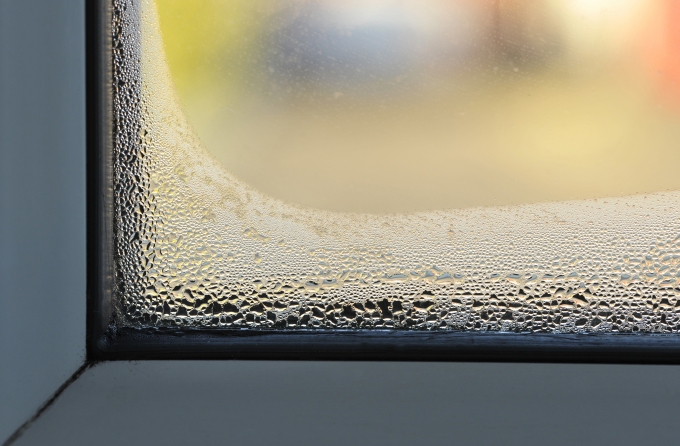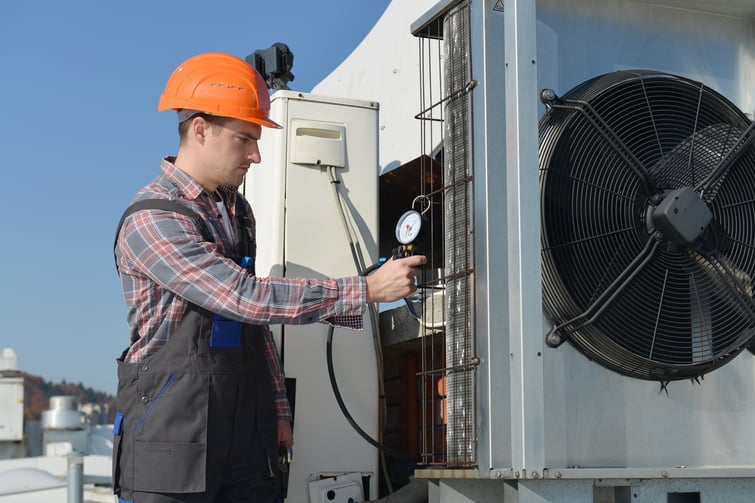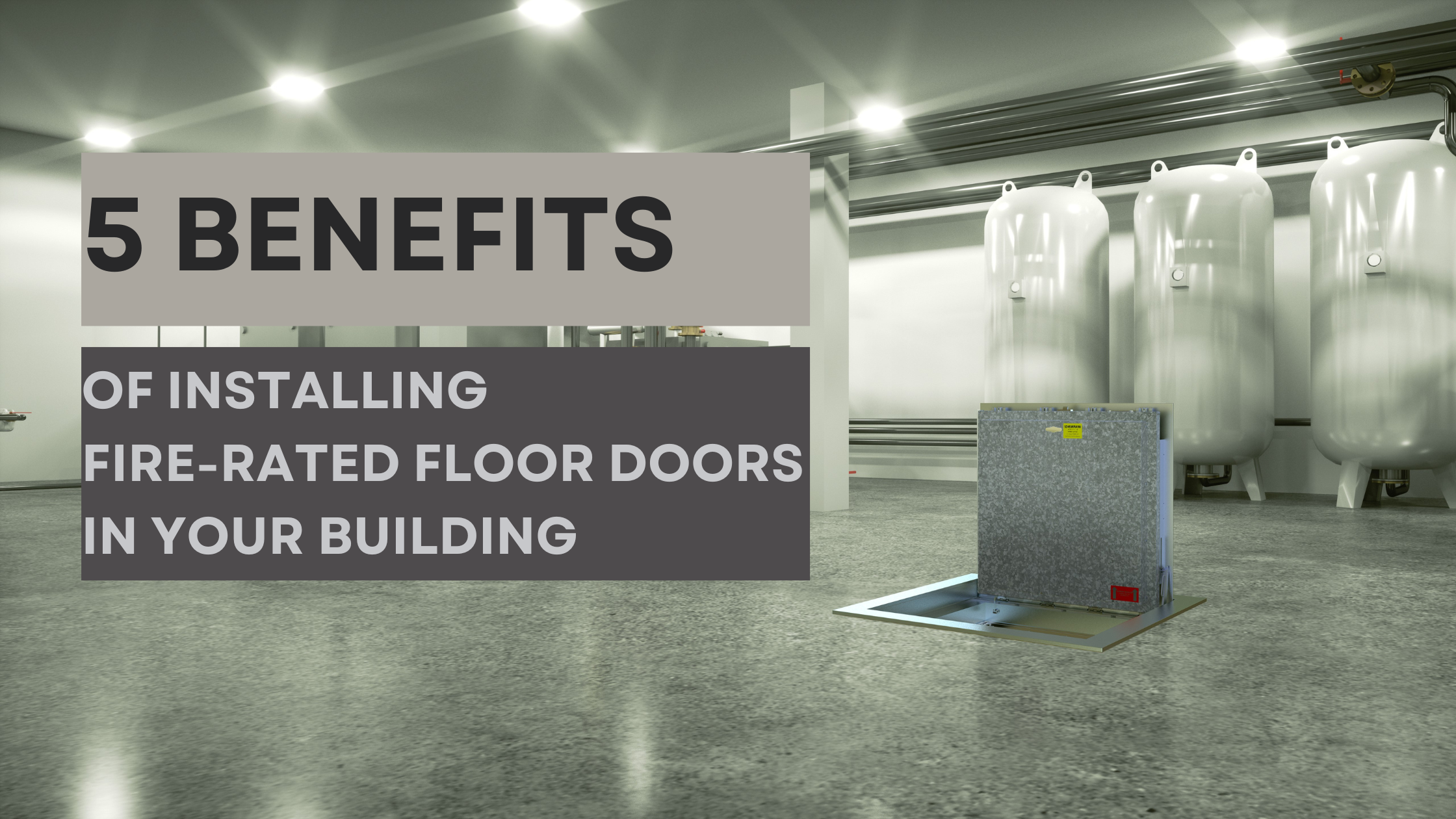Condensation and Commercial Building Roof Hatches & Smoke Vents

Condensation typically occurs on inside surfaces of windows, skylights, roof hatches and smoke vents whenever the exterior surface temperature falls below the dew-point temperature of the interior space. Warmer air is able to carry much more moisture than colder air, so as the temperature of the air increases it is able to hold a greater volume of water.
Condensation occurs because warm, moist air rises to the highest point - the ceiling. The problem, however, usually isn't with the hatch or vent. It is the excess moisture in the building causing the problem. While condensation is a much bigger problem in residential applications, condensation occurs wherever warm, moist air interacts with a cold surface (picture a glass of ice water on a humid summer day - the water vapor in the air is condensing on the cold glass).
What Causes Excess Moisture?
The air around us contains water vapor (humidity), and we add more water vapor to it by normal breathing, perspiration, cooking, and cleaning. And in a warehouse setting, propane-powered forklifts put a tremendous amount of moisture into the air.
Why Does Condensation Mainly Occur in the Winter?
Condensation occurs more often during cooler weather because a greater temperature difference exists between the warmer interiors and the colder exterior.
Warm air carries larger amounts of water than cold air. When warm, moisture-laden indoor air contacts a cooler surface, such as a cover of a roof hatch or smoke vent, the moisture in the air forms condensation on that cooler surface.
The chart below shows humidity levels needed to avoid excessive condensation.
| Outside Air Temp | Inside Humidity |
|---|---|
| -20°F or below | 15-20% |
| -20°F to 10°F | 20-25% |
| -10°F to 0°F | 25 - 30% |
| 0°F to 10°F | 30-35% |
| 10°F to 20°F | 35-40% |
Based on engineering studies at 70°F indoor air temperature.
Stopping Excess Moisture
 Spot Condensation
Spot Condensation
Condensation is a moisture problem. And to fight it, you need to limit the amount of water vapor in your space. Start by eliminating sources that contribute to excess humidity.
- In buildings with humidification control, lower the humidity level.
- Run ceiling fans to keep warm air from rising to the ceiling to help prevent condensation on roof hatches, smoke vents and skylights.
- Circulating air is the single most effective method of addressing "spot" condensation issues on roof hatches and smoke vents. "Spot condensation" typically occurs in the corners of windows, skylights, smoke vents and roof hatches - that is, the corners get the coldest and have the greatest temperature differential between the inside air and the surface temperature. Circulating air will even out the temperature and work to reduce condensation - much like using the "defrost" setting in your car to clear the windshield.
- Run a dehumidifier during winter months and damp weather.
- If the indoor environmental conditions can't be appropriately regulated, consider the placement of a thermally broken or thermally enhanced smoke vent or roof hatch.
Ventilation and Condensation
 Your space needs fresh air to fight condensation. Remember that cold air can hold less water vapor than warm air, so in winter the air outside is often drier than the heated air in your space. By allowing moist inside air to escape and dry outdoor air to enter, you can reduce your interior space's humidity level.
Your space needs fresh air to fight condensation. Remember that cold air can hold less water vapor than warm air, so in winter the air outside is often drier than the heated air in your space. By allowing moist inside air to escape and dry outdoor air to enter, you can reduce your interior space's humidity level.
If condensation is an issue with your smoke vents or roof hatches, consult with an HVAC specialist to see about increasing the amount of airflow and decreasing the humidity levels in your space.
For more information about smoke vent and roof hatch products and what might work best for your project, please visit our website.


